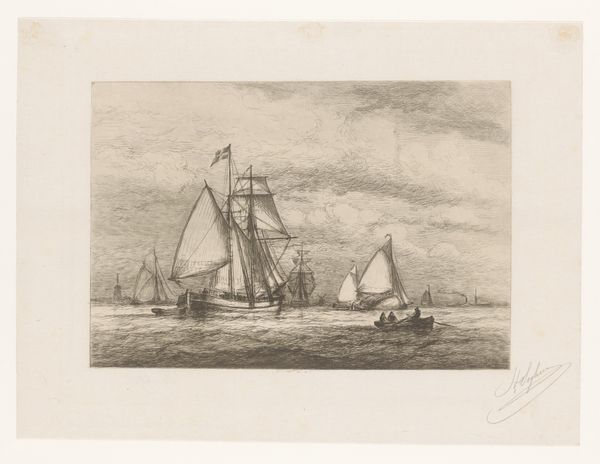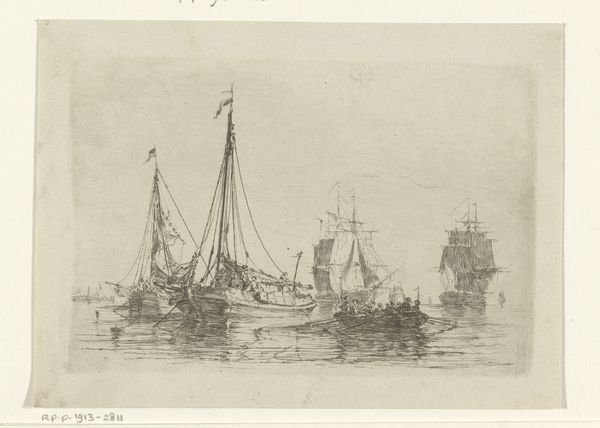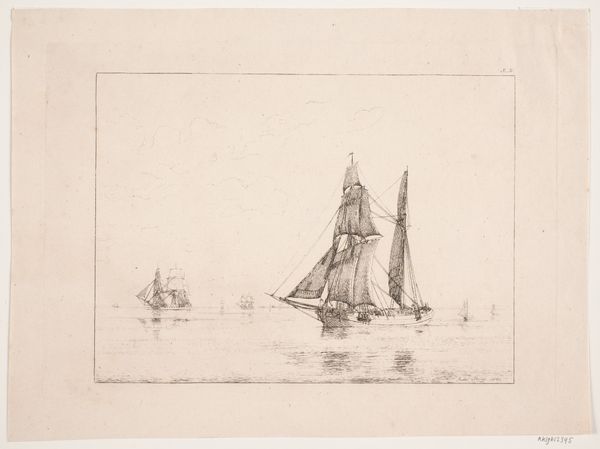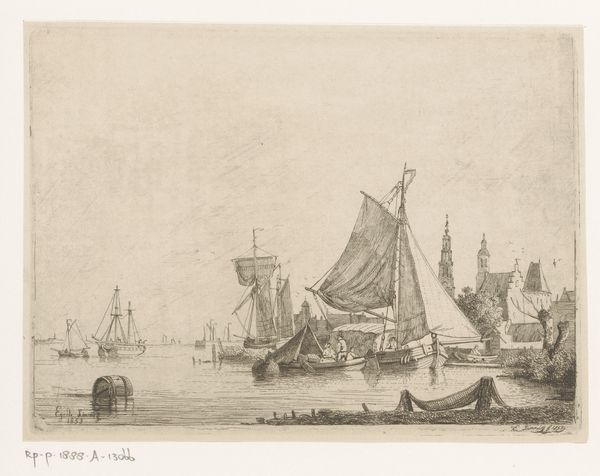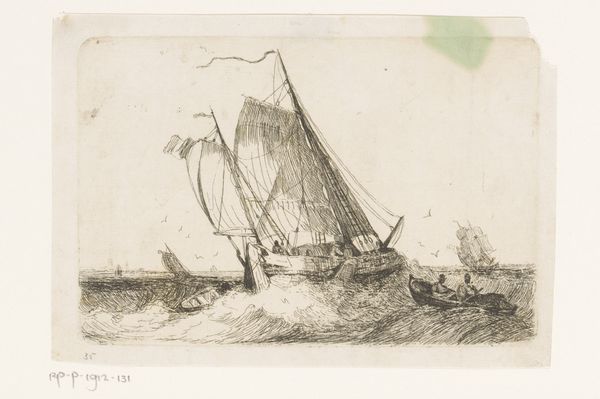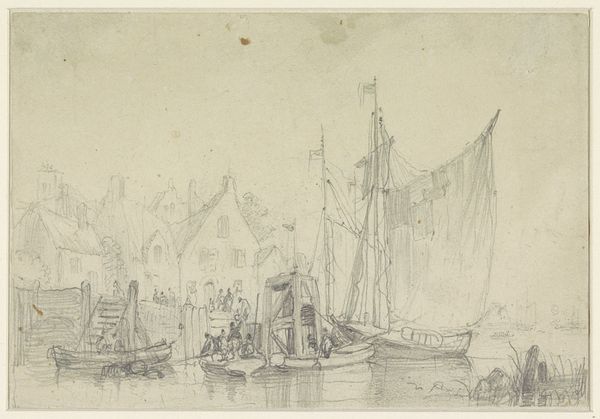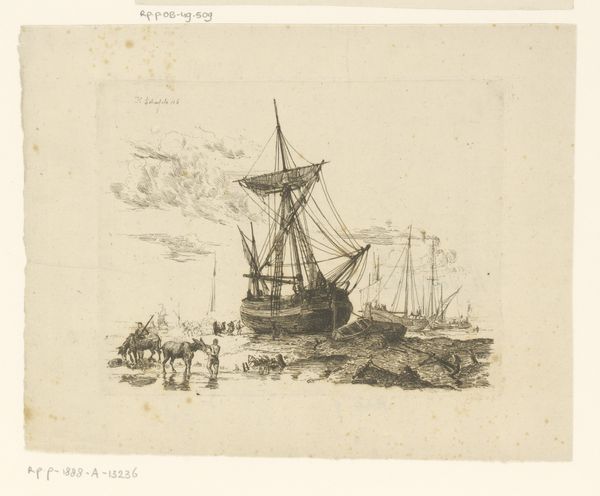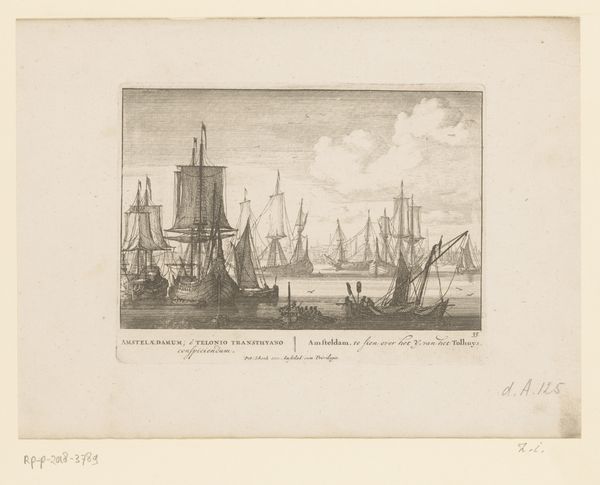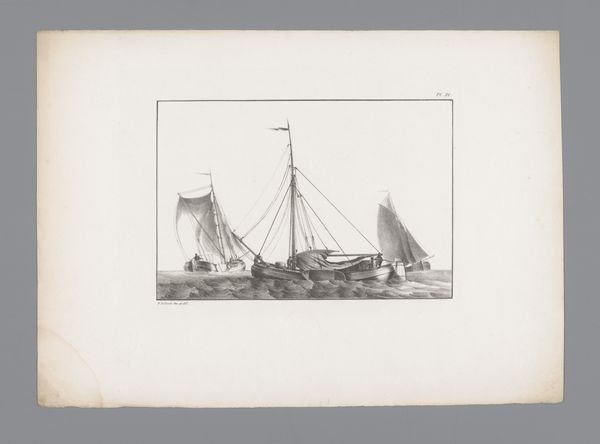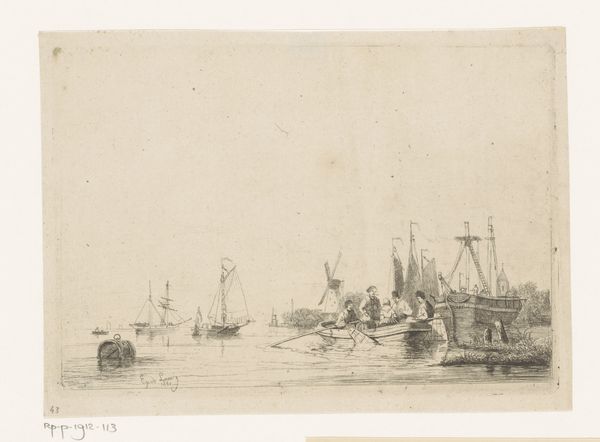
print, etching
# print
#
etching
#
landscape
#
etching
#
realism
Dimensions: height 81 mm, width 119 mm
Copyright: Rijks Museum: Open Domain
Curator: Here we have "Boten op het water," or "Boats on the Water," an 1845 etching by Henri François Schaefels. Editor: It has this fleeting quality, almost as if the artist captured a scene that might disappear with the next gust of wind. I'm drawn to its sense of temporality. Curator: Well, etching allowed for detailed and replicable images, which were widely distributed and accessible. For those excluded from traditional art spaces, prints became powerful vehicles for dissent and counter-narratives. It challenges the elite control of art and imagery by empowering a wider public to participate in visual culture. Editor: What speaks to me are the boats themselves; boats carry immense symbolic weight. Watercraft have always been connected to transitions and crossing over; the vessel offers passage between states, be they literal geographical relocations, spiritual transformations, or passages between life stages. Curator: These kinds of maritime scenes were quite popular, representing Dutch identity intertwined with maritime trade and naval power. But Schaefels’ personal life informs his work—he eventually joined the Belgian army. Perhaps this image reflects his own sense of transition before becoming involved in war? Editor: Look at the masts almost as skeletal figures, stripped bare and reaching heavenward. There’s a vulnerability despite the image's implied strength. The tiny birds hint at open skies and potential destinations, and I see a glimmer of optimism there, set against what looks like a somber scene. Curator: This resonates with an emerging Belgian identity—the yearning for self-determination as it grapples with existing socio-political structures, depicted by vessels afloat in unstable waters. Editor: The layering of all the meanings behind these conventional symbols suggests a tension between human efforts and the overpowering force of nature or larger systems at play. The personal and the political are very finely interlaced, which adds richness to the image, I feel. Curator: Absolutely, these etched lines serve to evoke those intersectional themes. Editor: Yes, now when I step back, what stays with me is the enduring appeal of symbols – of human endeavor.
Comments
No comments
Be the first to comment and join the conversation on the ultimate creative platform.
